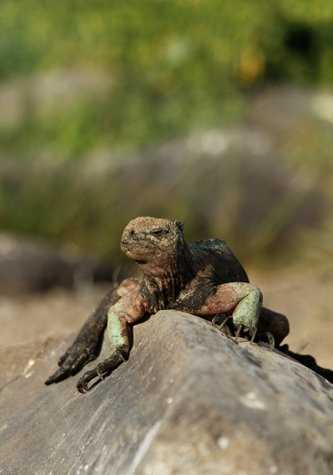Espanola is in the southeastern corner of the Galápagos and is therefore the oldest, geologically speaking.
It’s a stunning place for animals; both on land and in the water. Our first adventure of the day started very early for early risers, with kayaking along the coast. It was exiting as many birds could be seen flying around, as well as some sea lions and turtles.
After breakfast we all got ready for more. We grabbed our snorkeling gear and headed out for some deep water snorkeling along the coast of a small islet with some many different types of fish, sea lions, rays, and more specially, colorful invertebrates on the walls.
Some others just decided to catch up on snorkeling from the beach. Still, even there it’s possible to see some animals like sea lions bodysurfing or just playing and having fun.
After this, we took a walk along a beautiful white sand beach where many sea lions rest from their swimming and diving for fish in the surrounding waters of the islands. Mockingbirds and lava lizards also make the place interesting for photography, as they are all so friendly.
And all that was just in the morning!!
After lunch we were ready for more. This time we went to another place on the same island called Punta Suarez, which is crowded with animals from beginning to end. To welcome us were sea lions, crabs of all colors, colorful marine iguanas, and more. Male marine iguanas are at this time of the year in their best color to be attractive for females.
It is important to mention that this island has some species that are found nowhere else in the world, such as mockingbirds, lava lizards, and marine iguanas as subspecies. It’s also the only place in the world where waved albatrosses nest, mainly from April through December.
As we continue along the trail heading inland, the animals just show up from everywhere. Mockingbirds, finches and Galápagos doves are now very busy doing their own business. Hundreds of Nazca boobies were along the cliffs, in the middle of their breeding season. Some with large chicks are almost ready for flight and fishing. A couple of blue-footed boobies with their amazing blue feet posed very still as we walked by to take pictures. And in the short distance on top of large rock were two Galápagos hawks, the top predators of the Galápagos Islands. And yet another attraction of the island is a natural formation called “blow hole.”
The animals, the green of the vegetation, and many other facts makes this place a “jewel in the crown.” It is just an amazing place.







